The novel is considered the latest genre of literature, since poetry appeared almost parallel to civilizations (around the 25th century BC, in Mesopotamia) and the theater, something similar (if it is understood as the dramatization of a scene; as a genre it could be placed in India in the fifteenth century BC, in China in the second millennium BC, etc). On the other hand, the novel did not give its first titles until the classical world of the second century BC, although its consolidation had to wait until the Middle Ages. This is where, according to the BDM (World Digital Library, a project of the Library of Congress and UNESCO), the oldest case could be:a Japanese work written around the year 1021 and entitled Genji Monogatari .
Of course, as usually happens, to reach this cataloging, specific standards are applied that do not attract unanimity. Roman titles such as Satyricon will come to mind for many. of Petronius (late 1st century AD) and The Metamorphosis Apuleius (2nd century AD), the five Greeks (Leucippe and Clitophon , by Achilles Tacio; Chereas and Callírroe, of Cariton; Ethiopic or Theagenes and Chariclea , of Heliodorus; Daphnis and Chloe , from Longus of Lesbos; and Ephesian or Habrocomes and Antia , by Xenophon of Ephesus), the Fables of Miletus of Aristides or even the remaining fragments of Nino and Semiramis , all of them of similar date.
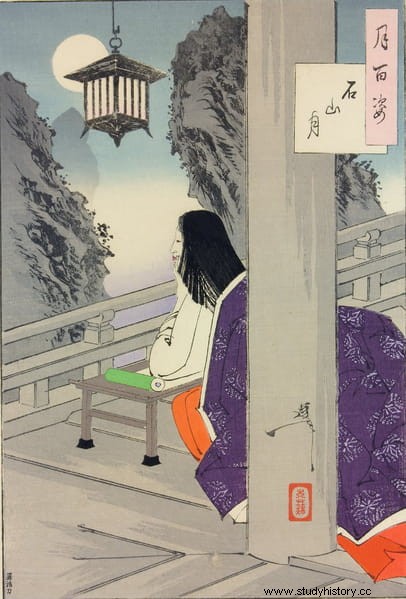
The problem is that they are usually in verse, just like older examples like the Epic of Gilgamesh Sumerian, the Ramayana and the Mahabharata Indians or the Odyssey and the Iliad of Homer, or they have archaic characteristics that give them a pioneering character but without reaching a full taxonomic place, hence the preference for Genji Monogatari as the first modern novel. In any case, what matters to us here is to talk a little about this Japanese work that is so unknown to the general Western public (Japanese schoolchildren do have it in their study plan), except for those who have seen some of its film adaptations; there are a few, several of them animes .
The Tale of Genji , as would be its translation into Spanish (it can also be found as The story of Genji or The novel of Genji , although it originally had no title), has an extra element that makes it even more peculiar:having been written by a woman. Her name was Murasaki Shikibu, a noble lady who lived at court, although her origins were more modest:she was the daughter of a member of the minor nobility who worked as an official -he became governor- and belonged to a family of illustrious writers. (in fact, she was the granddaughter of the famous poet Fujiwara no Kanesuke).
Born in Kyoto in the year 978 AD, with two sisters and a brother, she lived in the Heian period, a time of artistic and cultural splendor that, however, marginalized women in some matters of learning. Among them was not being able to learn Chinese, which was then still the administrative language - it was beginning to decline due to the emergence of a national cultural consciousness that promoted the use of kana (Japanese phonetic alphabetic characters) to the detriment of the usual kanji (Chinese characters)-and that's why she did teach her brother. But the fact of belonging to a saga of poets and officials gave Murasaki a special privilege and made her an intellectual exception among her sex, just as there were also in medieval Europe (Christine de Pizán, Eloísa, Leonor Lopez de Cordoba...).
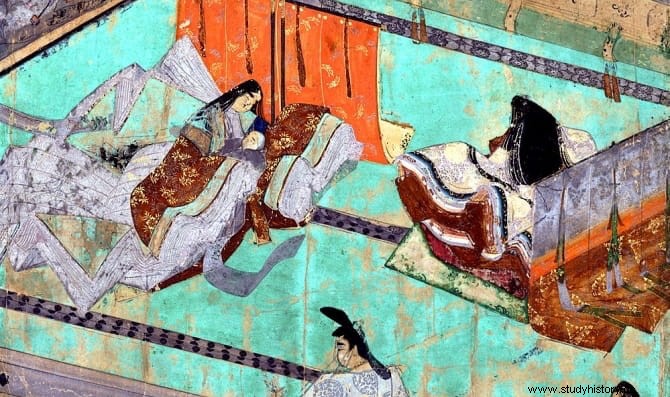
He married a friend of his father but was soon widowed, although he had time to give birth to a daughter, Kenshi, and to start writing the story with which he would go down in history, in part to vent the pain caused by the death of his husband. She allegedly did it during a retreat at a Lake Biwa temple. The Monogatari Genji It was distributed among her friends, who copied and spread it, making it a resounding success. This opened the doors to the court of Empress Fujiwara no Shōshi, who was assembling an exceptional cast of nyōbō (company ladies) characterized by the exquisite education of its members.
The writer was not entirely comfortable there and her rivals disparagingly nicknamed her Nihongi no Tsubone , something like Lady of the Chronicles. It should be added in this regard that, in reality, Murasaki was not her real name either; in Japanese high society it was considered in bad taste to refer to someone by him and their positions were used instead. Thus, Shikibu is a reference to the Shikibu-shō, the ministry of ceremonies of the imperial court where her father worked, while Murasaki is the violet color that, it is said, she used to wear on her clothes. In a list of bridesmaids from the year 1007, the one who was perhaps her birth grace appears:Fujiwara no Takako.
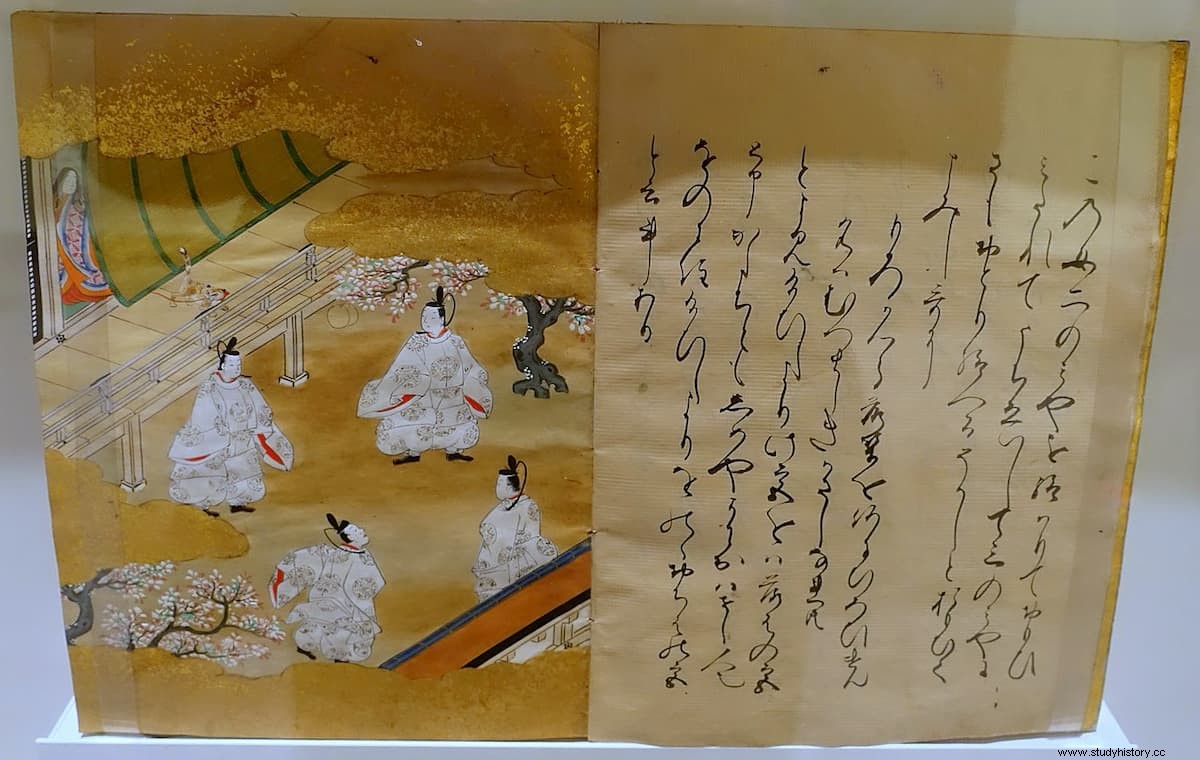
The novel, whose original manuscript does not survive, is made up of fifty-four kakimono (rolls), each corresponding to a chapter. For a time it was thought that Murasaki had written only the first thirty-three and the rest were due to the hand of Daini no Sanmi, the name by which her aforementioned daughter Kenshi was known, who was also a notable poet, today it seems discarded. The work narrates the life of Prince Genji (possibly a transcript of Minamoto no Tōru, grandson of Emperor Saga and poet) in all its facets, from the sentimental to the political, then going on to tell that of his immediate descendants.
The text explains how Genji falls in love with his stepmother and, frustrated by this forbidden love, kidnaps her niece, Murasaki, who is ten years old, educating her and dressing her to be like her, a bit like what happened in Hitchcock's movie Vertigo . However, he finally wins the favor of his beloved and they father a child who they pass off as the emperor's son. When he dies, the little boy is proclaimed heir while Genji, who has just become a widower, marries Murasaki for the second time. But he continues to have affairs and when he is discovered with an imperial concubine he is banished to the provinces... where he again becomes involved with the daughter of a wealthy local lord.
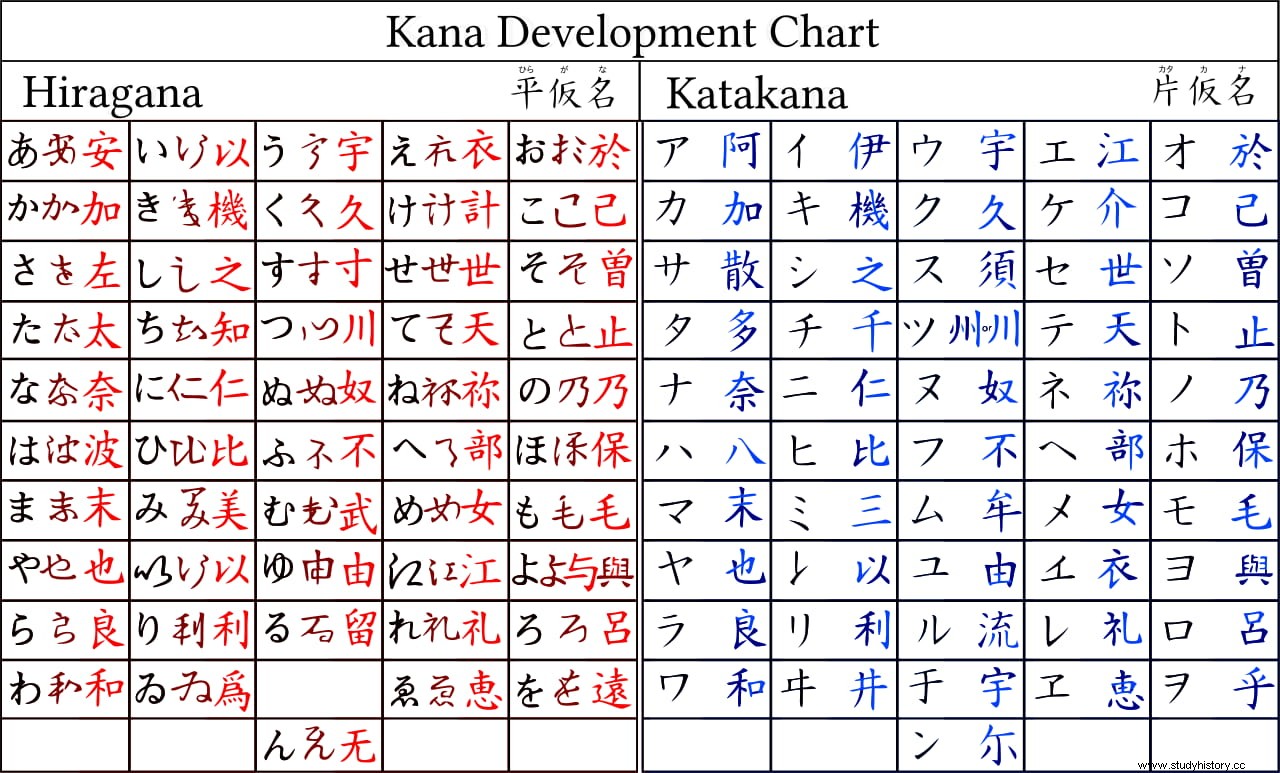
The resulting daughter will end up being empress later, but Genji returns when the son he had with his stepmother ascends the throne and pardons him, knowing that it is his father. Genji then lives his best days and even marries for the third time, until his age begins to take its toll. Murasaki dies, which makes him understand the transience of life. His own death comes, although it is not told expressly but with an elliptical blank chapter. From there, his descendants take center stage:his son Kaouru (of whom he is not actually the father but the uncle) and his grandson Niou, rivals in love. There is no proper ending; the story ends abruptly, it is not known whether intentionally or because the last chapters have been lost.
Throughout the text, the aristocratic society of feudal Japan is reflected, which facilitates the understanding of this exotic and closed world, its customs, the psychology of its people, etc. And that its reading is not easy, not even for his contemporaries, since Murasaki wrote it for courtly readers and, therefore, using a cultured language in which explicit names are not mentioned because, as we said, it was not considered elegant, because the same word has a different meaning depending on the context and because, in addition, he used the aforementioned syllabary kana , instead of the kanji .
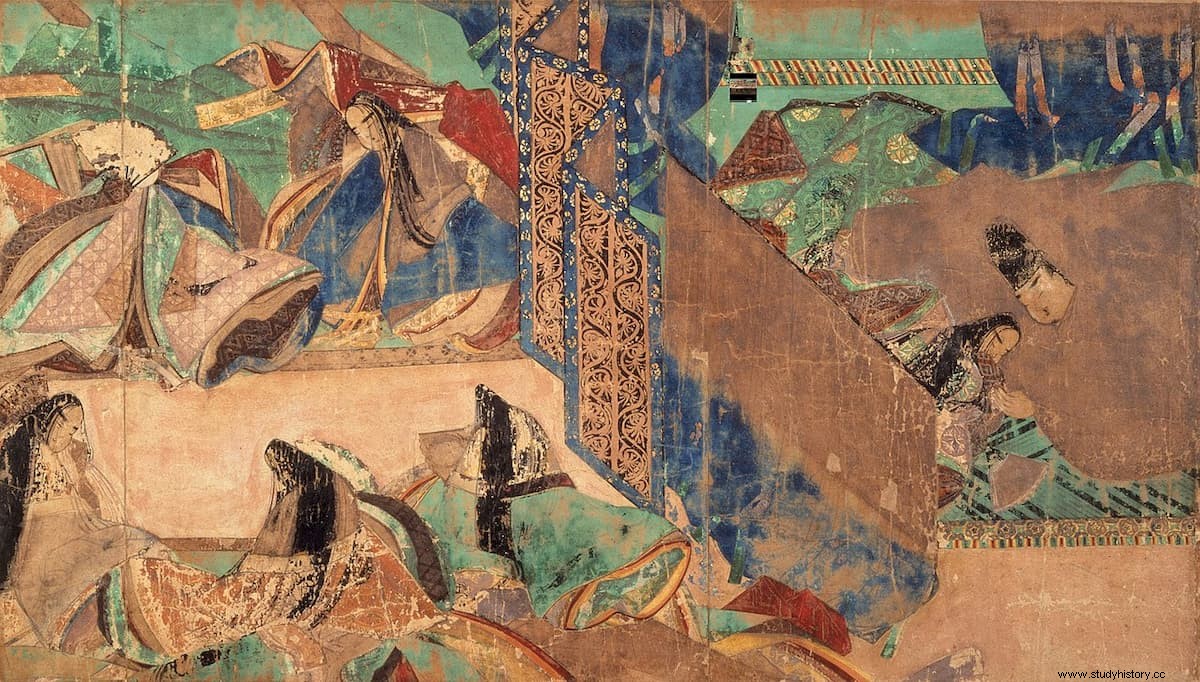
Murasaki's literary production was not limited to Genji Monogatari . In fact, the original manuscript does not survive (the closest version in time is the Genji Monogatari Emaki , a 12th-century parchment scroll with illustrations) and we know the name of its author only because she herself reviews it in the Murasaki Shikibu Nikki , her personal diary. Likewise, she wrote a collection of a hundred and a quarter poems entitled Poetic Memories , presumably written for her husband, which would be published posthumously, in 1206, by the scholar Fujiwara no Teika in the prestigious Shin Kokin Wakashū , the eighth imperial waka anthology (a type of poetry).
Murasaki continued to reside at court until 1013, when she accompanied Fujiwara no Shōshi on his retreat. Her chosen place was precisely Biwa, where legend says that she forged the inspiration for the Genji Monogatari . It seems that he died the following year, when she was forty-one, according to what can be deduced from the hasty trip her father made to Kyoto - where she was buried - and his subsequent admission to a Buddhist monastery (depressed because he had died shortly before another of his children), but there are those who believe that he could live until at least 1025.
